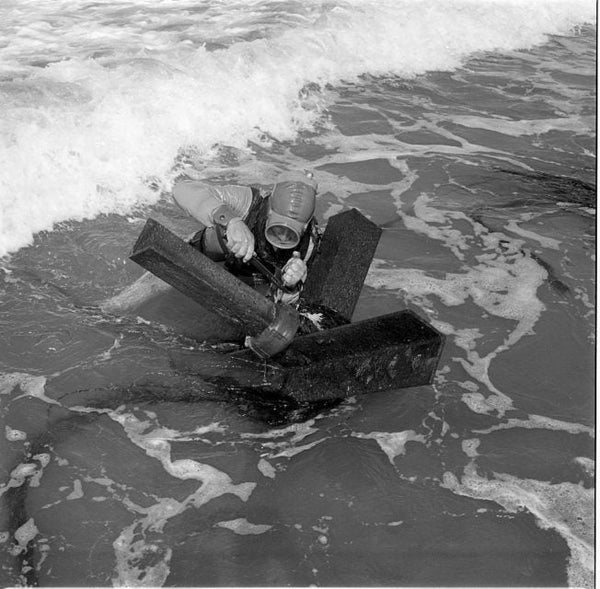The History of Dive Watches
Aug 28, 2025
There is a certain swagger to a dive watch. The moment it’s on your wrist, you know. The heft of the steel. The clean confidence of that bezel click. The way it seems ready for whatever you throw at it. These watches were never made for boardrooms or dinner parties. They were built for the deep, meant to stare down saltwater, pressure, and darkness without flinching. Dive watches are more than accessories. They are survival gear with stories carved into every scratch. For the men that used them, each mark was a chapter. Some from the sea, where silence pressed heavy. Others from days building a life back home. That is the true legacy of dive watches.
The story began in 1926 when Rolex unveiled the Oyster case, the first truly waterproof wristwatch. To prove it, they dunked it in a shop window fish tank and strapped one to a swimmer crossing the English Channel. It was not marketing that made it a legend. It was a watch daring the ocean to break it. Heritage dive watches began here, born not from style but from survival.
By the 1950s, professional divers needed something tougher. Blancpain answered in 1953 with the Fifty Fathoms, built alongside French Navy combat divers. It was pure function: bold markers visible in murky water and a rotating bezel you could trust with your life. That same year, Rolex launched the Submariner, waterproof to 100 meters, a workhorse that became iconic in both history and the world of military dive watches.
Soon, Omega joined with the Seamaster 300, Panerai lit up Italian frogmen’s wrists, and Seiko delivered rugged, affordable dive watches that could take a beating and surface ticking. Then came the legends like the Rolex Sea Dweller and Omega’s Ploprof, lifelines forged for men working in conditions that tested lungs and nerves. The race was not about luxury. It was about survival.
And that is where the Combat Diver comes in. Built as a tribute to the courageous Underwater Demolition Teams, the original Combat Divers or Frogmen of World War II.
That legacy traces back to the early 1940s. They were the direct predecessors of today’s Navy SEALs, pioneering combat swimming, closed circuit diving, and maritime infiltration tactics. They carried very little: explosives, a knife, a mask, fins, a dive watch, and courage. With such minimal gear, these Frogmen earned the nickname Naked Warriors. They were barely men, some even new fathers, with loved ones waiting back home. And yet they carried not just the weight of America, but the hope of the world, believing their sacrifices would build a safer future.
Most famously, on D-Day in June 1944, UDT swimmers cleared obstacles and explosives from the beaches of Normandy. Before the first waves of infantry and tanks stormed ashore, these men slipped into cold, mine laced water, planting charges and blowing paths through defenses so the assault could reach the sand. Their courage under fire saved countless lives and set the foundation for every combat diver who came after.
Every scratch on their dive watches told a story, a reminder of what they endured and what they fought for. These timepieces were trusted companions, as much a part of their survival kit as the gear strapped to their backs. It is here that the story of military dive watches and the American legacy truly became one.
Built to honor their legacy, the Declan James Combat Diver carries that same spirit inspired by the “Naked Warriors” of WWII-rugged, reliable, and stripped of the unnecessary. It is not just another dive watch, but proof that legacy is not something you say, it is something you live.

